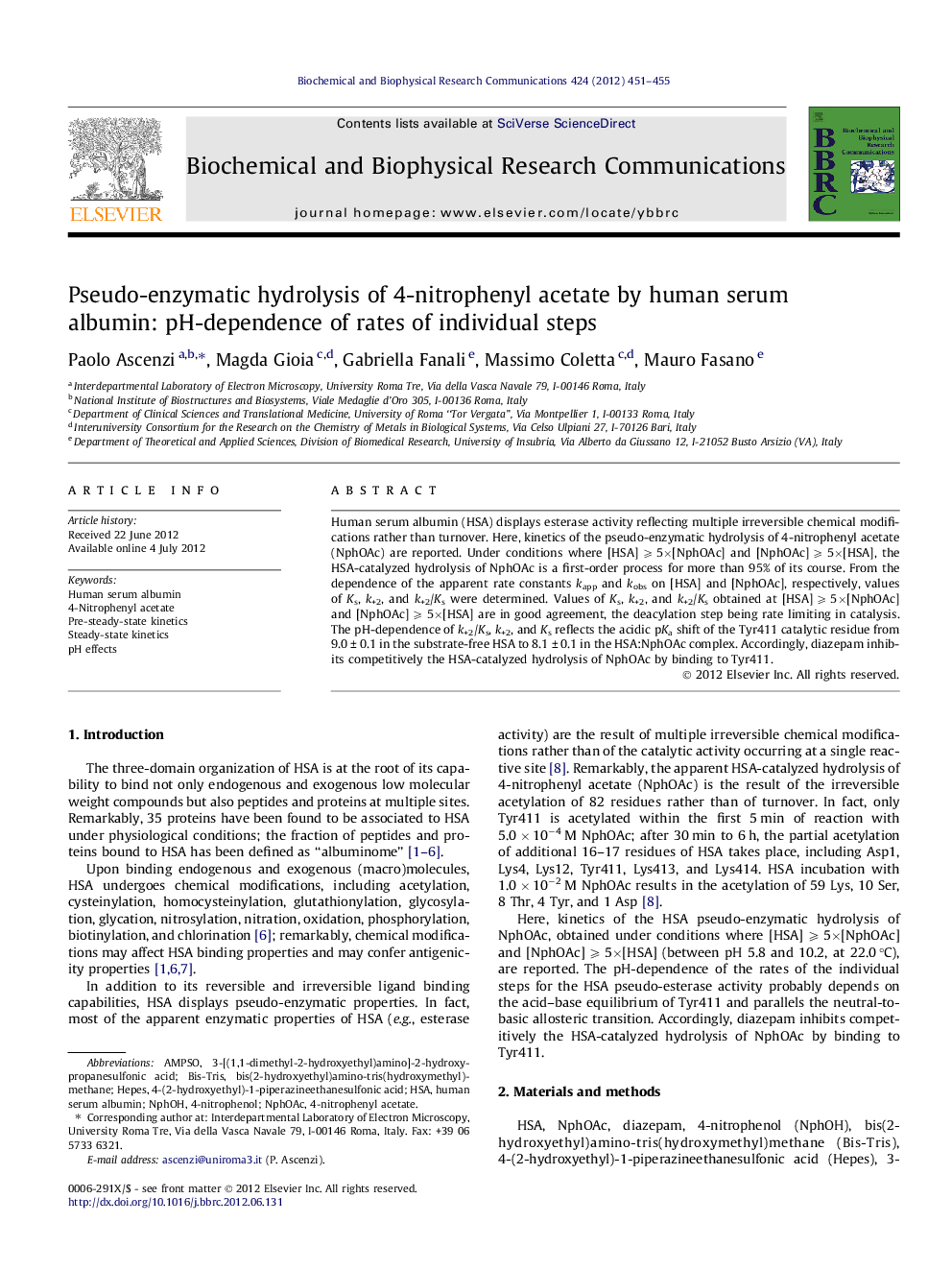| Article ID | Journal | Published Year | Pages | File Type |
|---|---|---|---|---|
| 1929319 | Biochemical and Biophysical Research Communications | 2012 | 5 Pages |
Human serum albumin (HSA) displays esterase activity reflecting multiple irreversible chemical modifications rather than turnover. Here, kinetics of the pseudo-enzymatic hydrolysis of 4-nitrophenyl acetate (NphOAc) are reported. Under conditions where [HSA] ⩾ 5×[NphOAc] and [NphOAc] ⩾ 5×[HSA], the HSA-catalyzed hydrolysis of NphOAc is a first-order process for more than 95% of its course. From the dependence of the apparent rate constants kapp and kobs on [HSA] and [NphOAc], respectively, values of Ks, k+2, and k+2/Ks were determined. Values of Ks, k+2, and k+2/Ks obtained at [HSA] ⩾ 5×[NphOAc] and [NphOAc] ⩾ 5×[HSA] are in good agreement, the deacylation step being rate limiting in catalysis. The pH-dependence of k+2/Ks, k+2, and Ks reflects the acidic pKa shift of the Tyr411 catalytic residue from 9.0 ± 0.1 in the substrate-free HSA to 8.1 ± 0.1 in the HSA:NphOAc complex. Accordingly, diazepam inhibits competitively the HSA-catalyzed hydrolysis of NphOAc by binding to Tyr411.
► Pseudo-enzymatic hydrolysis of 4-nitrophenyl acetate by human serum albumin. ► Tyr411-mediated catalytic properties of human serum albumin. ► pH-dependence of rates of individual steps in human serum albumin catalysis. ► Substrate-dependent acidic pKa shift of the Tyr411 catalytic residue. ► Diazepam-based inhibition of human serum albumin catalysis.
